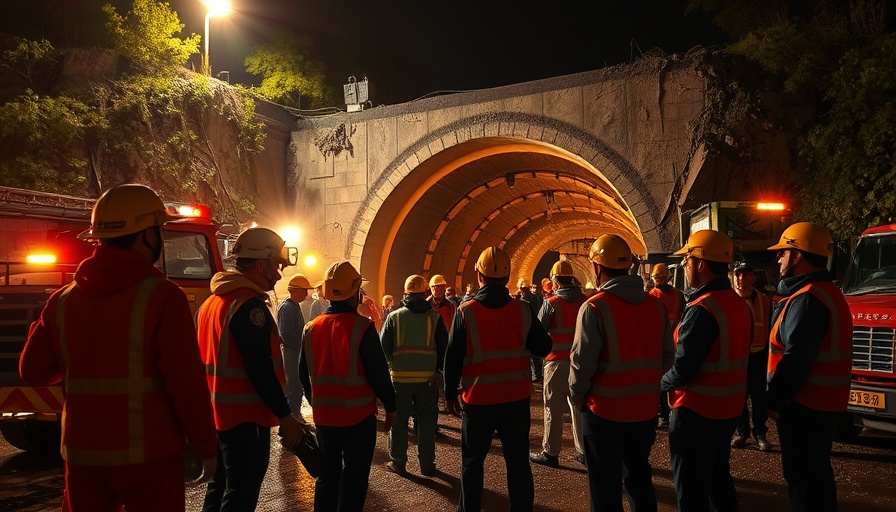
A Narrow Escape: Crew of 31 Rescued After Tunnel Collapse
In a gripping scene on what initially seemed like a routine day at work, 31 construction workers found themselves scrambling for safety after a partial collapse of a sanitation tunnel in Wilmington, California. The incident sparked a massive emergency response, with over 100 firefighters and specialized rescue teams mobilized to ensure the safe extraction of all workers involved.
Understanding the Incident: What Happened?
The collapsed tunnel, part of the Clearwater Project, connects the Joint Water Pollution Control Plant to the ocean, aiming to transport treated wastewater efficiently. At the time of the accident, 27 workers were inside the six-mile-long tunnel, located 400 feet underground, along with four others who entered to assist amidst the chaos. Fortunately, the debris did not fully block their escape route, allowing them to backtrack and navigate their way to safety.
The Importance of Workplace Safety in Hazardous Jobs
This incident highlights the perils of construction work, particularly when dealing with underground tunnels. For workers in such environments, being prepared and trained for emergencies is essential. The L.A. Fire Department’s prompt and effective response underlines the importance of having specialized training for various rescue scenarios. Despite the frightening experience, no injuries were reported, which is a relief; however, safety reviews and future construction plans are now under scrutiny.
Reflecting on the Human Aspect: Stories of Survival
After the collapse, L.A. Mayor Karen Bass met with the rescue workers, expressing gratitude for their safety. Many workers, still in shock, shared the emotional weight of the experience. For them, the incident served as a timely reminder of the unpredictable nature of hazardous jobs and the risks they face daily.
The Road Ahead: Lessons Learned
The tunnel construction is paused as assessments are conducted to determine the integrity of the remaining structure. Leaders in the local government, including Supervisor Janice Hahn and City Councilmember Tim McOsker, have emphasized the need for thorough investigations and accountability. This is not just about fixing a tunnel; it's about ensuring that measures are in place to prevent future incidents.
Community Perspectives: What This Means for Wilmington
The tunnel's failure adds urgency to discussions about workplace safety regulations. Residents in Wilmington, including those in nearby Bakersfield, are likely to reflect on the implications of this incident, especially as it concerns the broader regional infrastructure projects underway. Ensuring the safety of workers is not only a priority but a moral imperative for communities relying on such critical infrastructure.
Preparing for Future Events: Safety First!
Organizations should regularly review their safety protocols and training programs for all workers, especially in high-risk jobs. Emergency drills, regular safety meetings, and mental health support for workers can make a significant difference in handling crises and reducing anxiety.
Conclusion: A Community's Call to Action
As this story unfolds, it serves as a crucial reminder to prioritize safety in every aspect of professional life. For individuals residing in Bakersfield and surrounding communities, staying informed and proactive about safety practices can ensure that incidents like this are minimized in the future. We must advocate for stronger safety regulations and support systems for workers across various sectors.
If you would like to learn more about workplace safety and how you can contribute to a safer environment in your community, engage with local safety programs or volunteer at organizations that promote worker safety initiatives.
 Add Row
Add Row  Add
Add 



Write A Comment